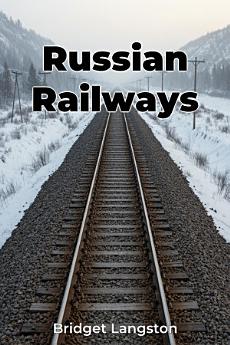Russian Railways
About this ebook
It examines how infrastructure policy became a tool for nation-building, resource extraction, and geopolitical strategy, with a particular focus on the Trans-Siberian Railway.
This book highlights the political and economic motivations behind railway construction, the immense engineering challenges faced, and the lasting consequences on regional development.
One intriguing insight is how railway expansion, while fostering economic modernization, simultaneously exacerbated regional inequalities, creating new dependencies.
The book adopts a unique approach by combining quantitative economic analysis with qualitative examinations of the social and political context.
It is structured into three parts, beginning with the early stages of railway development and the debates surrounding state versus private control.
It then turns to the construction and operation of the Trans-Siberian Railway, detailing logistical challenges and financing.
The final section analyzes the broad economic and social impacts, including agricultural exports and industrial growth.
Through its analysis, the book reveals how Russia's railway system, while a catalyst for economic growth, also led to uneven distribution of benefits across the nation.








